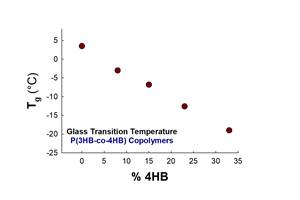40 Years On, TSCA Reformed Marking First Major Update to Environmental Law in 20 Years
Plastics industry representatives and environmentalists hailed the passage of TSCA reform, a reboot four decades in the making.

Plastics industry representatives and environmentalists hailed the passage of TSCA reform, a reboot four decades in the making.
The fact that representatives of both sides of the issue offered praise and criticism of the Frank R. Lautenberg Chemical Safety for the 21st Century Act indicates the law, which amends the Toxic Substance Control Act of 1976, represents some amount of compromise on the issue, a rare commodity in Washington DC these days.
TSCA reform was one of six measures signed on June 22, and it enjoyed bipartisan support in both the House and the Senate. , there’s not much the both parties and the president can agree on these days. Per the White House, improvements to TSCA included in the reforms include:
- Mandatory requirement for EPA to evaluate existing chemicals with clear and enforceable deadlines;
- New risk-based safety standard;
- Increased public transparency for chemical information;
- Consistent source of funding for EPA to carry out the responsibilities under the new law
In a , Environmental Protection Agency (EPA) head Gina McCarthy described the law as the first major update to an environmental statute in 20 years (emphasis McCarthy’s).
“TSCA was intended to be one of our nation’s foundational environmental laws. In terms of its potential for positive impact, it should have ranked right alongside the Clean Water Act and the Clean Air Act, which, since the 70’s, have dramatically improved water quality and helped clean up 70 percent of our nation’s air pollution. But it hasn’t….Forty years after TSCA was enacted, there are still tens of thousands of chemicals on the market that have never been evaluated for safety, because TSCA didn’t require it.”
The original Toxic Substances Control Act, signed by President Gerald Ford in October 1976, was intended to provide the EPA:
Authority to require reporting, record-keeping and testing requirements, and restrictions relating to chemical substances and/or mixtures. Certain substances are generally excluded from TSCA, including, among others, food, drugs, cosmetics and pesticides.
Prior to its passage, the EPA’s deputy administrator, John R. Quarles testified in 1975 specifically about the risks perceived in chemicals including vinyl chloride, fluorocarbon, bischloromethylether (BCME), polybrominated biphenyls (PBBs), and polychlorinated biphenyls (PCBs), saying these chemicals “point to the inadequacy of our present approach to controlling toxic substances.” At the time, Quarles said that every year about 600 new chemical compounds were introduced in the United States for commercial use.
William Carteaux, president and CEO of , thanked President Obama for signing the bill into law.
The U.S. plastics industry thanks President Barack Obama for signing this vital piece of legislation. H.R. 2576 delivers a much-needed update to the nation’s chemical regulatory infrastructure and ensures that “óĻó“«Ć½es in the plastics industry can continue to meet the needs of consumers by manufacturing the safest, strongest and most technologically advanced products and materials in the world.
Andy Igrejas, the director of Safer Chemicals, Healthy Families—a coalition of health, environmental, labor and “óĻó“«Ć½ organizations—noted the importance of the bill’s passage but also noted its perceived limitations.
President Obama’s signature on this bill marks both the end of a long process, and the beginning of a new chapter as the EPA puts its new authority to work. The chemical backlog is enormous. It's vital that EPA starts strong and extracts the maximum public health benefits possible from the new law. Because of the limitations in this bill, however, it will also be crucial that the growing demand for safer chemicals continue across society, from state and local governments, retailers, manufacturers and informed consumers.
Cal Dooley, president and CEO of the American Chemistry Council, praised the bill’s passage, noting the ACC’s long-running interest in the reform.
The reform is a historic bipartisan achievement at a time when such achievements are increasingly rare. It is the first major environmental law passed since 1990. Under it, chemical evaluation and regulation will meet new 21st century standards, which will improve the lives of American families, support American manufacturing and bolster U.S. economic growth. Reforming TSCA has been ACC’s top priority since 2008. For the past three years, ACC and our coalition partners, the American Alliance for Innovation (AAI), have worked together to support bipartisan efforts to modernize TSCA in a way that ensures smart, effective chemical regulation.
The reform was named after former New Jersey Democratic Senator Frank Lautenberg, who along with Louisiana Senator David Vitter initially introduced TSCA reform in 2013. Lautenberg passed away three years ago on June 3, 2013 at 89, not living long enough to see the law that even the Environmental Defense Fund called a
DYK: reform is the 1st major update to an environmental statute in 20 years? Learn more:
— U.S. EPA (@EPA)
SPI President & CEO Bill Carteaux applauded lawmakers for passing the bill. Read his full remarks here
— SPI_4_Plastics (@SPI_4_Plastics)
At last! 40 years after 1st passed, signs historic reform bill into law.
— American Chemistry (@AmChemistry)
Today signed bipartisan reform, huge step forward to help protect Americans from toxic chemicals.
— Gina McCarthy (@GinaEPA)
With a stroke of 's pen, we'll finally bring chemical safety into the 21st century.
— Tom Udall (@SenatorTomUdall)
Related Content
Inside the Florida Recycler Taking on NPE’s 100% Scrap Reuse Goal
Hundreds of tons of demonstration products will be created this week. Commercial Plastics Recycling is striving to recycle ALL of it.
Read MorePHA Compound Molded into “World’s First” Biodegradable Bottle Closures
Beyond Plastic and partners have created a certified biodegradable PHA compound that can be injection molded into 38-mm closures in a sub 6-second cycle from a multicavity hot runner tool.
Read MoreLooking to Run PCR on a Single Screw? Here’s What to Keep in Mind
Just drop it in and mix it up? Sorry, there’s a lot more to it than that. Here is some of what you need to consider.
Read MoreFilm Extrusion: Boost Mechanical Properties and Rate of Composting by Blending Amorphous PHA into PLA
A unique amorphous PHA has been shown to enhance the mechanical performance and accelerate the biodegradation of other compostable polymers PLA in blown film.
Read MoreRead Next
People 4.0 – How to Get Buy-In from Your Staff for Industry 4.0 Systems
Implementing a production monitoring system as the foundation of a ‘smart factory’ is about integrating people with new technology as much as it is about integrating machines and computers. Here are tips from a company that has gone through the process.
Read MoreFor PLASTICS' CEO Seaholm, NPE to Shine Light on Sustainability Successes
With advocacy, communication and sustainability as three main pillars, Seaholm leads a trade association to NPE that ‘is more active today than we have ever been.’
Read MoreMaking the Circular Economy a Reality
Driven by brand owner demands and new worldwide legislation, the entire supply chain is working toward the shift to circularity, with some evidence the circular economy has already begun.
Read More














